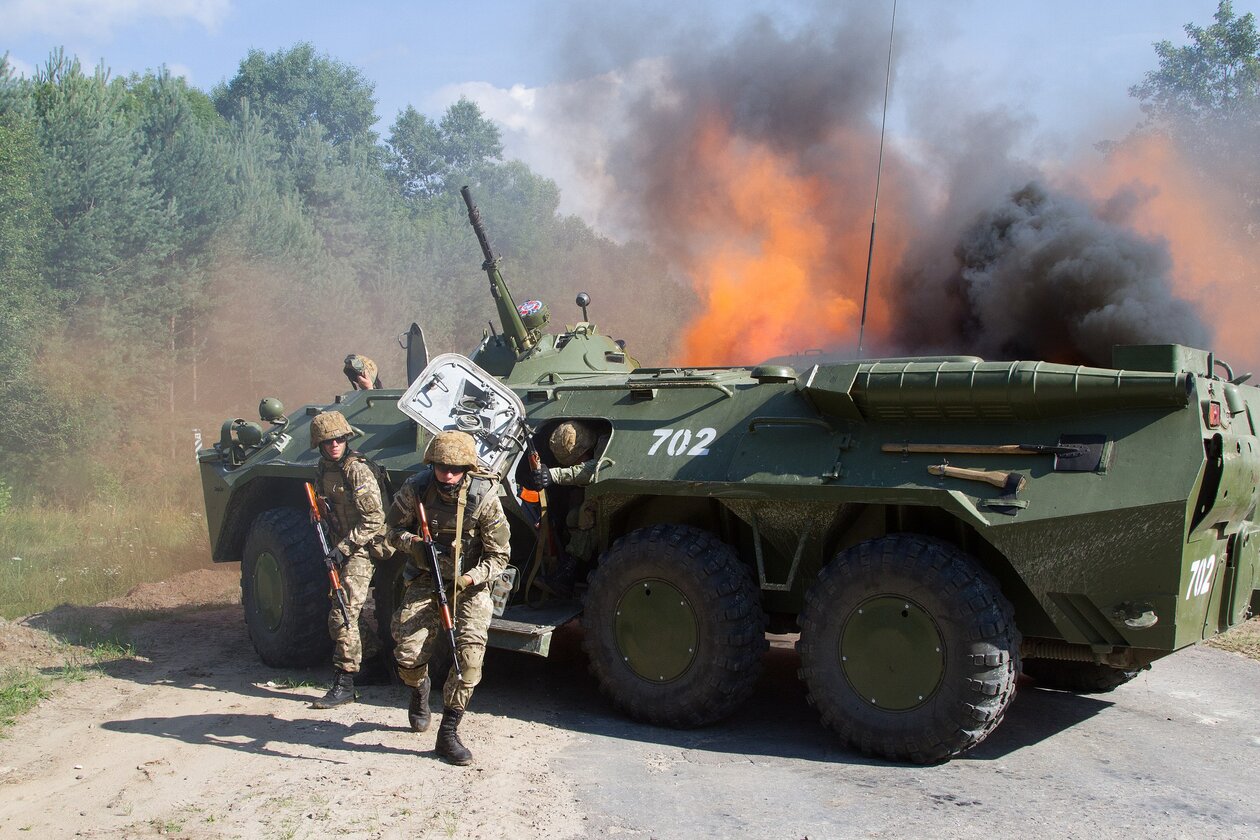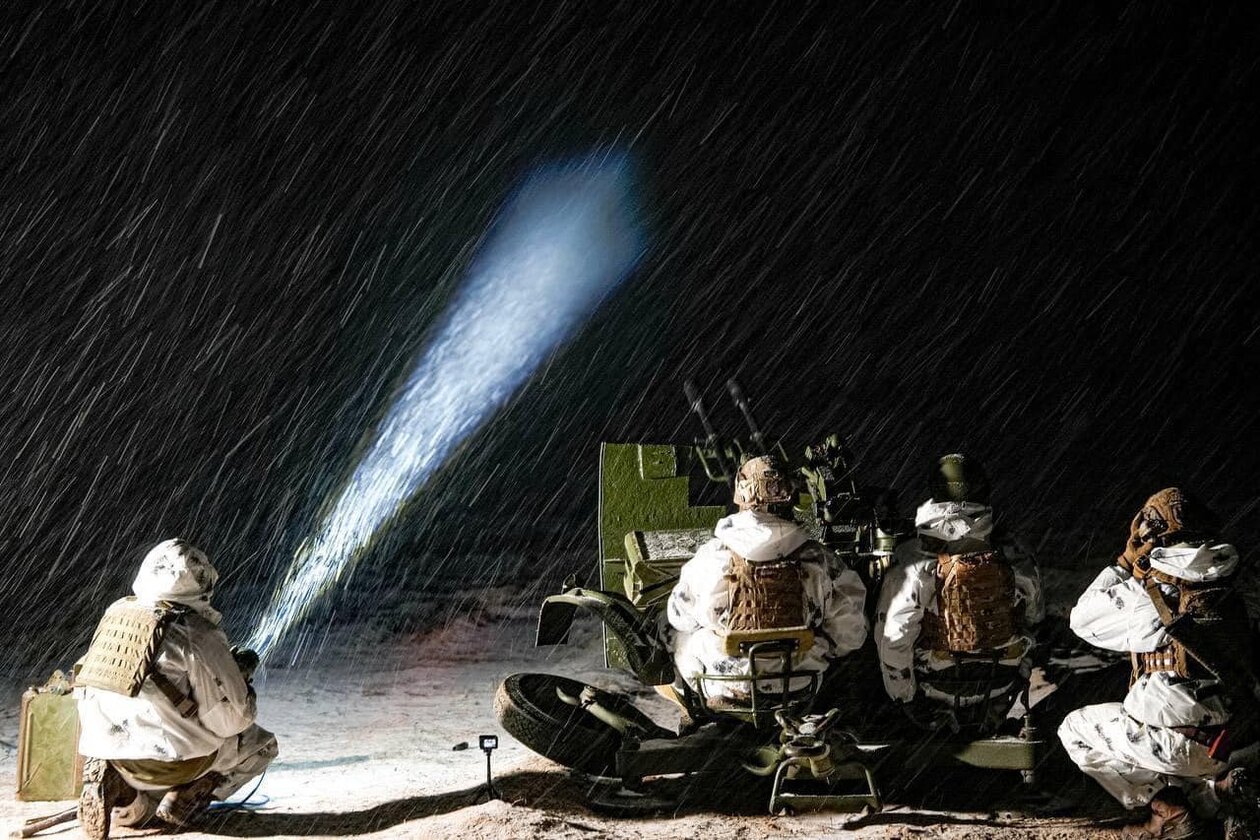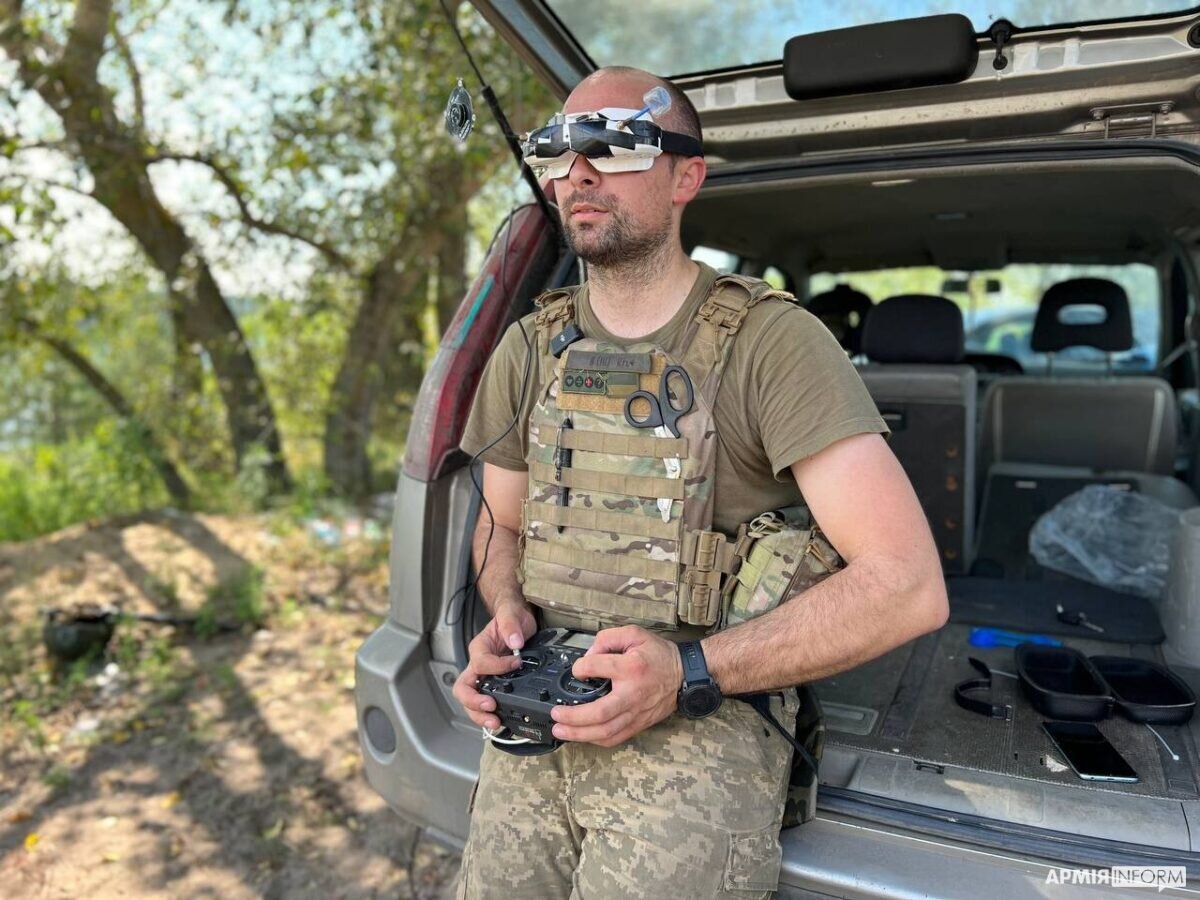The Only True Gamechanger for Ukraine: System Integration of Weapons
Since the start of Russia’s full-scale invasion against Ukraine, western public and media have been discussing which individual weapons system would be a “game changer”. Such a weapon is expected to dramatically alter the chances for Ukraine to change the fortunes of war. But in war, “combined arms” does the magic trick of augmenting the ability of the armed forces to tactically and operationally synchronize all different arms to win the fight. In the history of warfare, an individual weapons system could never play a decisive role of a game changer. The same is true for the Russo-Ukrainian war.
The discussion about military game changers are understandable. Western support to Ukraine was disputed from the very start, and decisions about different weapons systems were discussed one at a time. Hence, supporters of the assistance to Ukraine had to argue why each individual weapons system would be important to Ukrainians. In April-May 2022, the idea of delivering 155-mm artillery systems to Ukraine started. By the end of May 2022, the west decided to supply air defense systems to Ukraine. Then time was spent on discussing whether tanks and infantry fighting vehicles should also make their way to Ukraine. From January 2023 onward, the west discussed whether to supply fighter jets and aircraft ordnance, including long range ammunition such as the British Storm Shadow or the German Taurus. As a result, deliveries of individual weapons, and not of integrated weapons systems, have unsurprisingly inflated expectations of consequential battlefield successes each time a new weapons type delivery had been greenlighted.
At the same time, the need for combined arms warfare has never taken hold in a wider audience. To be successful in battle Ukraine needs a combination of artillery, armor, infantry, combat engineers, drones, electronic warfare, and air defense. Each of the weapon systems supplied by the west partially covered this need. But the whole effort does not rest on one individual system alone. Rather the combination of all these weapons systems and their proper employment in the war makes the difference. This is the only way forward, if the West wants to assist Ukraine in properly using all these different means and tools for the conduct of war.

Ukrainian soldiers during their exercise at Yavoriv training center. Photo by Sgt. Alex Skripnichuk, public domain
Combined Warfare Replaced by Single Arms Discussion
Attempt to improve Ukraine’s combined arms capability also regarded training. The necessity to rapidly increase the size of Ukraine’s armed forces to cover the extended frontline, as well as to guard its long border with Belarus and Russia, overburdened Ukraine’s military training and education facilities. Hence, the West stepped in. In the spring of 2023 Ukrainian soldiers were trained by the United States, the United Kingdom, and multiple European states in a training initiative financed by the European Union. Ukraine put great expectations in the west-provided training: after all, NATO standards was the buzzword of the day. If Ukrainian forces were trained according to NATO standards, they believed, they would use western weapons systems much more effectively. Combined with the supposed technical superiority of western weapons systems, this greater effectiveness should have increased Ukraine’s chances to conduct a successful summer offensive in 2023.
These hopes have not materialized. This has happened not because combined arms warfare was unimportant, but because many details have been overlooked on the way. First, NATO standards is rather a catch-phrase than a concept of fighting on the battlefield. Especially on a tactical level, various NATO armies fight, or train for combat, differently. Different military cultures, and different war experience after the end of the Cold War, have made NATO armies a much more heterogeneous club than they themselves would prefer. Assembling a fighting force of companies each trained by different NATO countries on different NATO equipment proved much more challenging and time consuming than should have been. Second, warfare has evolved, as well as Russia’s army itself. The west’s thinking on a conventional war against a peer competitor is still dominated by the Cold War doctrine. However, fighting Russia in 2022-2024 is not fighting the Soviet Union in 1985.
Russia’s tactical modernization and innovation adopted in Ukraine pose a very different threat than the USSR’s Red Army. Computerized command and control systems allow Russia to concentrate artillery fire from decentralized firing positions on the single spot on the battlefield within a few minutes. Loitering munitions and FPV drones provide long range anti-tank fires from covered positions across a wide stretch of the front and into the Ukrainian rear. On average Russia uses 1,500 of these systems per day. The Russian armed forces have also improved their air-to-ground coordination, and close air support by combat helicopters is much more effective and better coordinated than at the beginning of the war. Electronic warfare systems deny satellite navigation on the battlefield and sometimes even make communication, voice radio or data transfer, impossible. Under these circumstances, many precision-guided munitions the west uses do not work. The west’s war-fighting practices also require an update.

Ukraine's National Guard hunting Russian drones. Photo: National Guard of Ukraine, CC-BY-4.0
Fighting in the Death Zone
The front line in Ukraine is a death zone several kilometers deep. Armored vehicles can only enter this death zone for a short time. They need to complete their mission within 15-20 minutes and withdraw quickly. If not, these vehicles become targets for massive drone swarms or artillery fire. This is why Ukraine holds back the heaviest western fighting equipment like the M1 Abrahams main battle tank. It is too heavy, and if it gets stuck in the mud, recovering this vehicle takes too long, and necessitates the assistance of at least two other main battle tanks. Such an assembly would be immediately targeted by the Russians.
On the other hand, Russian “turtle tanks” are used in increasing frequency. These are normal armored vehicles or tanks, covered with additional improvised shielding, often in a form of large metal plates, enveloping them and making the tank look like a turtle. Effectively, these are well armored mobile electronic warfare platforms. Their main aim is to protect accompanying fighting vehicles, either main battle tanks or infantry fighting vehicles, from drone attacks. Mobile electronic warfare systems mounted on each Russian fighting vehicle have proven insufficient for that job, because Ukrainians have developed automated targeting software for drones, even after they had lost radio connection to operators. “Turtle-tanks” have more powerful EW systems and are difficult to immobilize by AI piloted drones.
These are just a few innovations recorded since the start of Russia’s invasion. The battlefield in Ukraine is a constant battle between innovation and counter-innovation. The technical lifespan of a drone or an electronic warfare system is measured in weeks or months, never in years. Even larger combat items have limited lifespan: main battle tanks played an underappreciated role in the battle for Kyiv in March 2022, but could be effectively countered by other means already by mid-2023. FPV-drones helped Ukraine to foil countless Russian assaults in the winter of 2023-24, but now Russia’s armed forces seem to have found technical solutions to this problem.
Under these circumstances, commanders are under extreme time pressure forced to execute their mission very fast. Combat information systems that can provide live drone footage facilitate decision making and situation awareness. But the availability and the volume of data is so high, that human commanders also need support from computers to filter, analyze, and compile information. Innovative Ukrainian companies develop such systems: they often use commercially available hardware, but the software development behind it is unique. They also experiment integrating their systems into conventional platforms like tanks, infantry fighting vehicles, or artillery systems. Ukrainians have to constantly innovate to win an arms race for development with the Russians.

A Russian Turtle Tank in Action. A screenshot from an unauthored video.
Re-Conceptualizing Combined Arms Warfare
Such unusually high pace of the war has profound impact both on the conduct of combined arms warfare and the support we need to give to Ukraine. First, combined arms warfare must be reconceptualized. Drone capabilities and electronic warfare currently feature a much more prominent role than in the past. Although drones have many drawbacks and lack lethality, their ability to provide situation awareness, target coordinates, and immediate strike capability is unrivalled. On the other hand, drone operations are only successful, if they are well integrated in a comprehensive battle plan that includes all other arms as well.
Second, Ukraine needs to get an easier access to foreign defense funds. At the moment, the Ukrainian armed forces spend the lion share of their budget on personnel. The army can only procure half of what the Ukrainian defense industry is capable of producing. Therefore, money for experimentation and untried systems is often short in supply.
In a typical Ukrainian manner, civil society – funds, donation by relatives, NGOs - often fund the development and adaptation of such systems in cooperation with individual brigades. Some brigades have created acquisition bureaus and technical development offices tasked to cooperate with the defense industry. Such arrangements allow Ukraine to develop multiple systems simultaneously and to test solutions to urgent problems in relatively short order. The downside of this approach is that practical solutions only get implemented within a few units, and spreading technical and tactical innovation across the force is problematic.
On the other hand, Russia has large funds and the large bureaucratic apparatus. If a specific solution works, Russia can promptly multiply it on a large scale. Its big bureaucratic apparatus can also retrain large amounts of forces or specialists on new tactics and procedures. For instance, current Russian assault tactics were first tried out by the Wagner Group in the spring of 2023. Now they are applied across the force.

Ukrainian FPV Drone Operator. ArmyInform.Com.Ua, CC-BY-4.0
Ukraine has much more innovative brigades and commanders than Prigozhin, but it is difficult to spread their innovation across the entire army. After the full-scale invasion, the overall size of the Ukrainian armed forces has grown fivefold. Two dozen combat brigades grew into over 120. Ukraine's defense education system has a hard time training all the commanders necessary to lead this force. They do not have the spare capability to also conduct systematic lessons learned processes at the pace of technical innovation.
This is why the U.S. is thinking about sending military advisors to Ukraine. This is why Emmanuel Macron came up with the idea of sending NATO soldiers to Ukraine. No one expects NATO troops to fight in Avdiivka or elsewhere. NATO specialists should be sent to assist Ukraine in doctrinal development and training. At the same time, direct investment into the Ukrainian defense sector, particularly companies working on system integration and combat management systems, should increase.
If there is a so-called game changer in this war, it is the capability to synchronize new tech capabilities with conventional mechanized warfare and innovate faster than Russia. There is no one single weapons system to ensure that. It will only come through methodological work on technical innovation and tactical adaptation. Additionally, only Ukrainians fighting this war can judge in which direction these innovation and adaptation steps will lead. What the west could do is to be very open to cooperation. Especially, if western countries want their armies to be able to deter and, if necessary, defeat a Russian adversary that has learned and modernized throughout the two years of the Russo-Ukrainian war.
Do you want to support our activities and/or donation campaigns? Consider donating to the European Resilience Initiative Center! As we are a registered charity, your donations are tax-deductible in Germany.